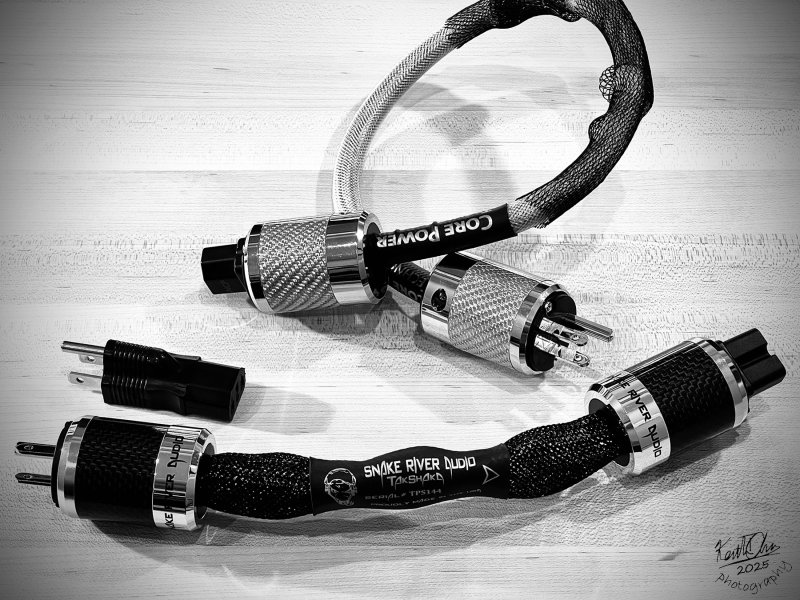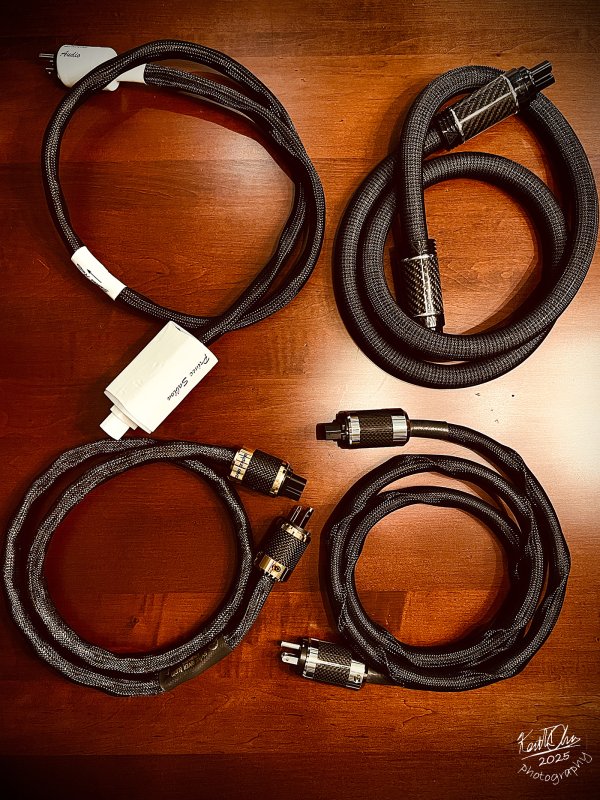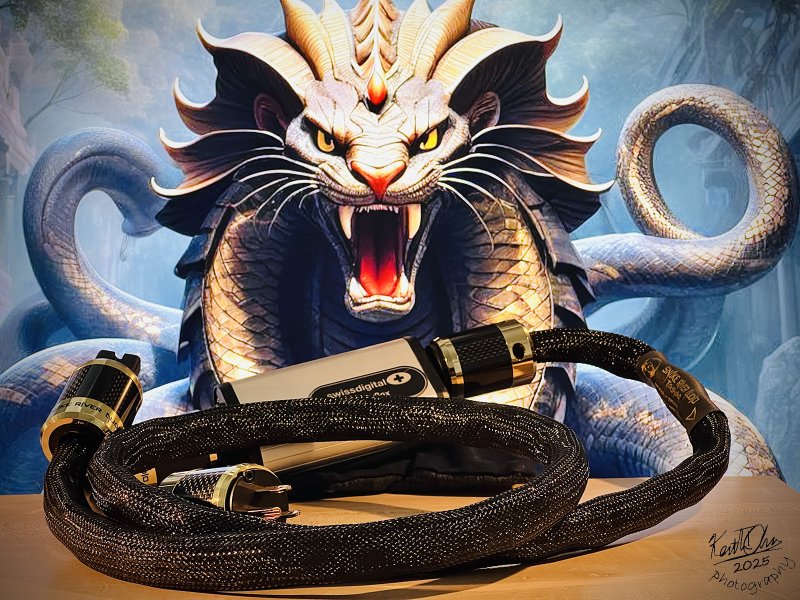
Along this audio journey I am often reminded of two consistent beliefs -- 1) that everything matters, and 2) in the words of my sage friend Stephen (@Puma Cat) , our upgrade-itis should aim at practically significant upgrades and not for barely imperceptible differences. These two concepts repeatedly came to mind during the months spent listening to and gathering my thoughts for reviewing Snake River Audio's flagship Takshaka power cables.
Ironically, my interest in the Takshaka was the result of my evaluation of another product, the Vera-Fi Swiss Digital Fuse Box (SDFB) -- this is a $495 unique product in the aftermarket audiophile fuse market comprised of a box with a Hall effect fuse switch (and a graphene-coated copper slug in place of the IEC fuse). The SDFB necessitated an extra power cord: an upstream cord from power conditioner to SDFB and a downstream cord to the component. My SDFB was purchased along with Vera-Fi's 2-feet power cord (aka "Extreme Piggy") which conveniently addressed the extra-cord problem, but to be frank, this little cable was total scheiße -- everything sounded so off that it was as if I lost one phase of a balanced system (been there). Other folks on the WBF forums also acknowledged the Piggy extension cord was not the best and suggest using a $10 IEC C13 to NEMA 5-15P adapter from Amazon, which members swore would make the SDFB awesome. Well, I tried that too, and despite being mildly better than the Piggy, it was still extremely veiled and there was a general loss of dynamics and frequency extension, robbing the whole system of its liveliness and soul (I told a friend the adapter/SFDB was akin to being choked to near black-out, and putting back my OEM $0.02 fuse was the fresh breath of life-saving air). To be fair, it was not the actual SDFB box that was the problem but rather the need for an excellent second cord; just as an experiment I replaced the $10 Amazon adapter with the QSA-Lanedri Spectra King (MSRP $12,000) as a second cord and it sounded wonderful.... but c'mon, this was far outside of being practical. I asked multiple manufacturers if they could make a 12" cord but none were willing, citing technical issues and general lack of interest. At this point I was absolutely convinced the SDFB was not going to work for me and was about to ask Mark at Vera-Fi for a refund when I saw @treitz3 post about a custom 8-inch Takshaka power cord which is specifically created for the SDFB market.
Would using Snake River Audio's reference cord solve my problem? Several Takshaka power cords spent a few months in my system to answer this question... and during this process, the Takshaka was tried not only with the SDFB, but also in lieu of multiple cords across the whole system -- with my Lampizator Horizon DAC and Sutherland phonostage, the Riviera AIC-10 amplifier, the Lucas Domansky digital music server, and also with my Network Acoustics network switch, and the rivals in this snake fight included the Shunyata Alpha V2 XC (MSRP $2,300), Sablon Audio Prince 2025 version (MSRP $3,250), QSA-Lanedri Gamma Infinity (MSRP $4,000) and Spectra King, as well as another custom-made power cord.

But wait! A short segue is due to introduce Snake River Audio, a small-but-increasingly-renowned audio cable company from Riggins, Idaho, a small town in the Pacific Northwest near the convergence of the Snake and Salmon Rivers. Owner Jonny Wilson is a passionate audiophile who has been experimenting with cable designs for over 15 years -- his early efforts took off with glowing reviews of the Mamushi and Cottonmouth cables dating back to 2011, and now he makes digital and analog interconnects as well as power and speaker cables. Jonny describes his innovative approach with "I start by asking 'What if it could.... ?' using a new concept, be it material, geometry, shielding, or mix of metals (he has hybrid designs combining gold, silver and copper) and seeing if it can be made," and then tests his prototypes and iterations both within his audio systems and with trusted listeners. While other audiophile interviews have described his journey into cable manufacturing, during my conversations with Jonny I had the fortune to find out more about the man behind his work -- and what stood out most to me is that Jonny is a sincere and nice guy who would be fun to hang out with over a beer and a bonfire; he comes from generations of ranchers who first settled along the Snake River canyon, has had careers in law enforcement and the arts, and is a proud veteran of the US Army. He is the kind of small business owner who loves what he does and exudes this joy when he talks to customers. Jonny describes his dedication to have the best possible cables and performance as a pursuit in ultimate artistry -- "no matter how long it takes... half-assed does not exist in my shop." Unlike larger competitors, every Snake River Audio cable is handmade by himself from raw wire to the final product, with his personal evaluation of the quality and meticulousness. He faithfully stands behind every product with a 30-day return policy and attention to customer issues.
The Takshaka is the culmination of Jonny's experience to create the elite cable that "stands above everything else" he has ever built, and it took 4 years from concept to product launch. The design incorporates gold, silver and OFHC copper wires, his custom winding geometry and a floating shield, and is available as both signal cables and power cords. The name comes from Hindu and Vedic mythology of the revered Takshaka, an imposing and majestic king of the serpents with unmatched strength and authority. Sweet! Hit me up, Jonny, show me what you've got!
In full disclosure, when the Takshaka came in for this review I was cautiously optimistic... already being absolutely content with my current system with all of its aftermarket tweaks, tubes, and crazy knick-knacks, I get so much joy just listening to music and am no longer interested in any upgrade or thinking about gear. Although I recognize the name Snake River Audio from friends, I have not seen or heard Jonny's products. But hey, I'm always a fan of small business owners especially those from my corner of the world, so the review begins.
Last edited:















